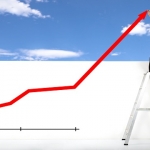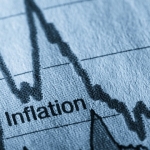Looking back at 2015, which was a flat year for most major asset classes, it is reasonable for investors to ask “What is a reasonable rate of return for a diversified investment portfolio?” As with many of life’s concerns, the answer is “It depends.” As we have distanced ourselves from the pains experienced during the Great Recession of 2008-2009, we have not only seen improvement in the U.S. economy but for many years since then, substantial gains have been achieved in the equity (stock) markets as well. In fact, several of these years provided double digit rates of return. The question to consider is whether advancements will continue to be made and if so, at what rate are they likely to continue? It is our opinion that the investment markets will grow at a moderate pace, and patience will be required.
Let’s evaluate expectations for the three primary asset classes typically included in a diversified portfolio — cash, bonds and stocks. First, cash is always considered a low risk investment. As a result, small returns are provided and today a savings account or money market account is only earning less than 1%. Although this interest rate may increase to 2-3% over the next few years, we certainly do not expect much more than this for the foreseeable future.
For bonds, the forty year bull market is over. Interest rates have declined from the high double digits experienced in the 1970’s to a paltry 2% on the ten-year US Treasury as of the end of 2015. As interest rates fall, the prices of bonds rise. The result over the last four decades is that the overall total returns were often in the high single digits. Now, with rates as low as they are, it is inevitable that they will begin to rise over the next couple of years, which is typical as we continue through the economic cycle. Our expectation is that rates will not rise quickly, however, and therefore bonds as an asset class will not lose much if any value, but will continue to pay a small dividend yield. Primarily, bonds will serve as a ‘safe haven’ investment, a means of protection for when equities experience a decline, which will naturally occur from time to time.
The opportunity for any growth within a diversified portfolio will therefore be from the equity positions. Although it may be tempting to increase returns by increasing the allocation to the stock market, doing so comes with its own set of perils. By pursuing too aggressive of a strategy, volatility will increase, which increases the risk that one may abandon the investment at the worst possible time. By way of example, in 2008 many investors sold their stock holdings in a panic, after the market decline, and remained in cash for way too long. Since 2009, the S&P 500 Index, which is a broad measure of the US stock market, has only recently returned to pre-recession levels, which required an astounding 150% gain in order to achieve this mark. Missing out on these gains results in an underperforming portfolio and provides inadequate returns.
When evaluating stocks in context of historical performance, it is not unusual to see a point where markets advance a slower rate, especially once the economy has recovered from a recession and has ventured further along in the economic cycle. A testament to our recovery being underway is that for the first time in nearly ten years, the Federal Reserve raised short term interest rates in December, a signal that the economy can sustain itself without additional stimulus. With less risk of a faltering economy, typically lower returns are generated by stocks.
For the next few years, given the low rate environment described above, it is not unreasonable to expect returns for a diversified portfolio to be below historical averages. Depending on risk tolerance it will vary to a degree but a return of 6-7% may be a realistic expectation. And although a properly diversified portfolio will include additional asset classes beyond cash, bonds and stocks, these are the three core areas which, if implemented appropriately, will reduce volatility but will still provide growth given a long time horizon, such as for a period of five years or longer. A big challenge, however, will be maintaining a discipline during a relatively low return environment, thereby allowing the portfolio to grow over time and achieve the best results possible. To maximize opportunities, a strategy of prudent rebalancing, profit taking and tactical allocation changes will be necessary along the way as well.
I’ll follow up shortly with Part II of this blog, to discuss whether 6% is a “good” rate of return.
To learn more about David Wilder, view his Paladin Registry profile.
Other posts from David Wilder
Is Anyone Managing Your 401(k)?
Many investors have a 401(k) or 403(b) retirement plan that includes limited investment options and, as a result,...
Are New Stock Market Highs a Concern?
With many stock indexes such as the Dow Jones Industrial Average and the S&P 500 hitting new market...
Investment Returns Revisited – Part II
Is 6% a good return on your investment? In Part I of the our blog, we discussed the...




Great article Dave